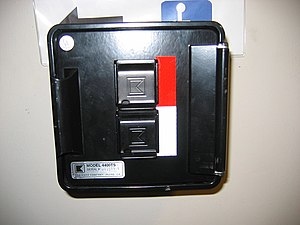
Backdraft
What is a CAN report?
A report stating your Current Conditions, Actions being performed, and Needs of resources. Often times IC will ask units for a CAN report.
How many feet are our Pre-Connects?
200- FT
The chemical abbreviation for ethanol, or ethyl alcohol, also used to describe someone believed to be intoxicated.

Knox Box
Tacoma FD
What's the difference between recycling and rehabbing?
Recycling: A timely and efficient resupply session before re entry.
Rehab: Unlike Recycling, this is the setup for longer term rehabilitation. Food, water, medical attention, and other resources should be setup here in a cold zone.
How many Life Jackets do we have on the Engine?
4
Describe Convection
The transfer of heat by the movement of air or liquid.

Stove Pipe Fire Hat

Chicago Fire
Upon level one staging an engine company should not pass the last - ??
Hydrant or Plug
What is the brand of our Hurst tool on the engine?
TNT Rescue
What is Bernoullis Principle? How is it relevant to the fire service?
Bernoulli's Principle states "an increase in the velocity of a stream of fluid results in a decrease in pressure". Water flowing from a nozzle will create an area of low pressure and draw even more air into the area you are directing the stream.

Gable Vent

Only the Brave
What does IAP stand for?
Incident Action Plan (IAP) – represents the tactical priorities (based on the chosen strategy) that the IC must accomplish to bring the incident under control.
How many Axes do we have on the Engine?
3
Describe Balloon Framing
In balloon framing, the studs (vertical members) extend the full height of the building (usually two stories) from foundation plate to rafter plate, as contrasted with platform framing, in which each floor is framed separately.

Steamer or Steam Fire Engine

Fireheart
In a large building according to blue card classifications, a 200 ft handline can access what percent of the building?
50%
At 750 GPM our pump PSI is maxed out at what number?
250
What is Thornton's Rule
The heat released per unit of oxygen consumed was fairly constant for the complete combustion of a large number of organic gases and liquids.
This technique, known as oxygen consumption calorimetry, has been refined since 1917 to allow the accurate measurement of the energy released from any burning object or room.

Pulaski tool/Pulaski Axe
